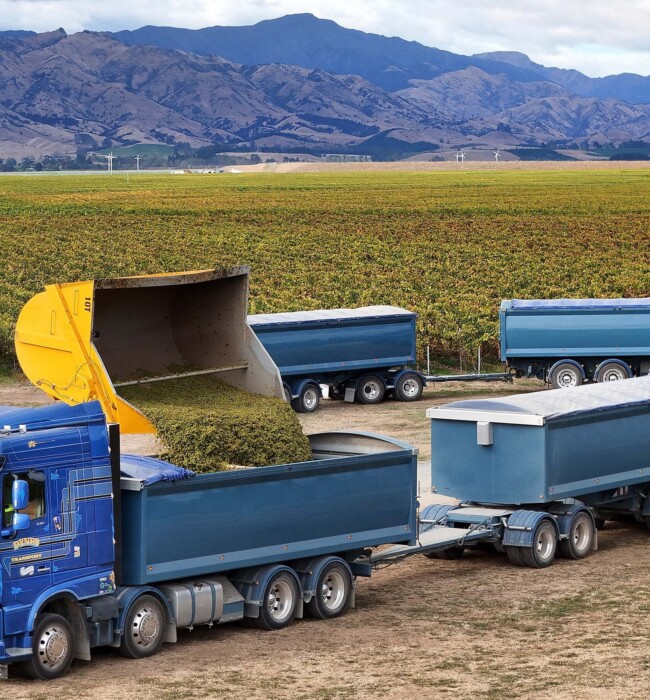A really grape harvest
Dynes Transport entered the grape harvest sector after identifying it as a seasonal complement to milk transport within the wider group of businesses. This opportunity provided a valuable entry point into another primary industry, allowing the team to apply its expertise in identifying and eliminating inefficiencies, redefining productivity, and delivering measurable improvements in operational performance. Over the past eight years, Dynes has continually challenged the status quo and made significant advancements in how grape cartage is managed. Compared to conventional practices, Dynes has materially reshaped the process. The business has built a strong network of loyal industry partners who have joined the journey, benefiting from a premium level of service, and a logistics provider that is embedded in their industry and committed to continuous improvement year after year, all while maintaining the highest safety standards.
This year presented its own set of unique conditions, as each harvest does. Ripening was slower due to unusually large grape bunches on the vines, leading to a more gradual start to the season. Despite this, with partners focused on operating more efficiently, it is likely that Dynes transported more grapes per truck than ever before. The operation assembled approximately 50 grape trucks in varying configurations. Around 15 of these were from Dynes, including Blue Hydro, supported by additional units from within the wider group. The remainder of the fleet comprised subcontractors, many of whom also support the milk logistics operations, sourced from both the North and South Islands. Dynes continues to enhance its services through evolving technology solutions, including the introduction of a new operations dashboard this season. More than 60 dedicated Dynes personnel, most brought in from outside the region, were involved in this year’s harvest. The team transported more than 130,000 tonnes of grapes and at least 20,000 tonnes of grape marc, which includes skins, seeds, stems, and pulp.
Due to a surplus of wine already in storage, every available and appropriate vessel was deployed to provide static storage solutions. This included two 120,000 litre horizontal silos transported from Dunedin and installed at a local winery, where they will remain for at least the next two years. This movement was supported by the Bulk Liquid Solutions team and transported north by Dynes’ Blenheim based transporter, the same transporter that facilitated at least half of the 107 grape harvester relocations across the region during harvest. In addition, Dynes managed the transport of millions of litres of wine and juice in its dedicated bulk wine road tankers during the peak of the season. The business looks forward to the ongoing challenges and unique opportunities each new grape harvest will continue to bring.



